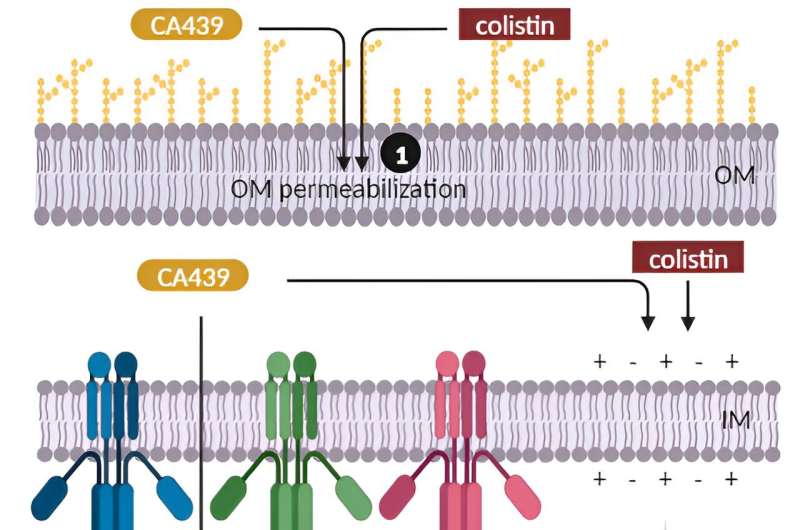This article has been reviewed according to Science X's editorial process and policies. Editors have highlighted the following attributes while ensuring the content's credibility:
fact-checked
peer-reviewed publication
trusted source
proofread
New dual therapeutic strategy shows promise against multidrug-resistant Salmonella

A new collaborative study discloses the discovery and application of a new therapeutic strategy to target the multidrug-resistant bacterium Salmonella enterica in vivo, with promising results. The results were published in Scientific Reports.
The study was carried out by researchers from the University of Eastern Finland, as well as from the Rosario National University, Argentina, and the University of the Republic, Uruguay.
Antibiotic-resistant bacterial infections stand as one of the critical biological threats to human health on a global scale, exemplified by the multidrug-resistant (MDR) Salmonella enterica. The rise of MDR strains, coupled with the constrained array of treatment options, necessitates the innovation of therapeutic approaches. Addressing this imperative, the study introduces a strategy to enhance the efficacy of colistin, a last-resort antibiotic.
"Through the utilization of a non-antibiotic anti-virulence quinazoline compound, we investigated a dual-pronged therapeutic methodology," explains Senior Researcher Christopher Asquith from the School of Pharmacy at the University of Eastern Finland.
In an earlier study, the team had discovered a quinazoline compound suitable for this purpose.
The combined treatment with the quinazoline and colistin targets Salmonella by simultaneously inhibiting its resistance mechanisms against colistin and disrupting the bacterium's envelope electrochemical equilibrium. This synergistic interplay not only introduces a new route to counter MDR bacteria but also lays the groundwork for potentially addressing resistance challenges associated with other antibiotics.
The quinazoline compound specifically affected the Salmonella PhoP/PhoQ two-component signal transduction cascade, which is a key regulatory pathway exploited by this pathogen for both the advancement of infection and the development of resistance. The outcomes presented within this study underscore the potential of leveraging this pathway to target bacterial disease. It also provides a blueprint for tailored interventions beyond Salmonella to a spectrum of bacterial infections.
The efficacy of the dual treatment in mitigating mortality within an in vivo insect infection model marks a stride toward potential therapeutic applications.
"Collectively, these findings hold implications for combating antibiotic resistance and deepening our comprehension of bacterial pathogenesis. The prospective to reshape treatment strategies and alleviate the global burden of MDR infections make this work a significant contribution to the antimicrobial research field," Asquith says.
More information: Carlos A. Lobertti et al, Enhancing colistin efficacy against Salmonella infections with a quinazoline-based dual therapeutic strategy, Scientific Reports (2024). DOI: 10.1038/s41598-024-55793-0



















